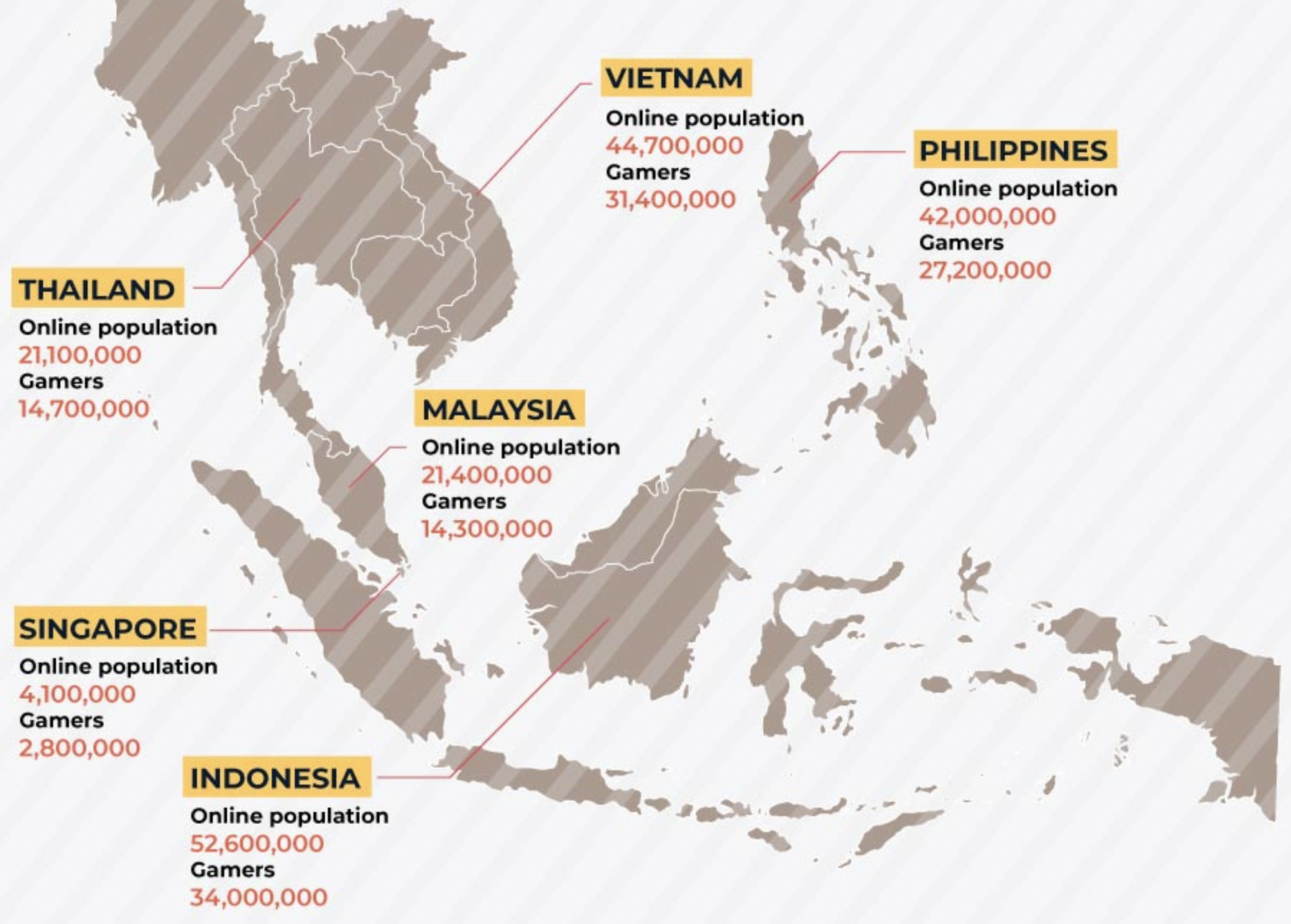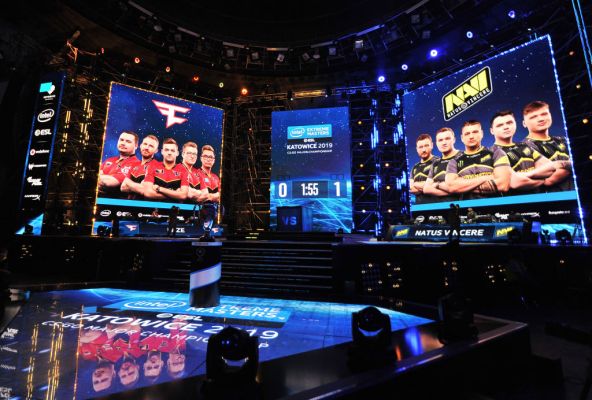Lee Trink has spent nearly his entire career in the entertainment business. The former president of Capitol Records is now the head of FaZe Clan, an esports juggernaut that is one of the most recognizable names in the wildly popular phenomenon of competitive gaming.
Trink sees FaZe Clan as the voice of a new generation of consumers who are finding their voice and their identity through gaming — and it’s a voice that’s increasingly speaking volumes in the entertainment industry through a clutch of competitive esports teams, a clothing and lifestyle brand and a network of creators who feed the appetites of millions of young gamers.
As the company struggles with a lawsuit brought by one of its most famous players, Trink is looking to the future — and setting his sights on new markets and new games as he consolidates FaZe Clan’s role as the voice of a new generation.
“The teams and social media output that we create is all marketing,” he says. “It’s not that we have an overall marketing strategy that we then populate with all of these opportunities. We’re not maximizing all of our brands.”
FaZe Clan is dominant on social media. Trink says the company’s players and entertainers can generate 500 million views across platforms like YouTube, Instagram and Twitch. At a pop-up event in New York last July, fans shut down several blocks in lower Manhattan and police came in to call off the event.
Initially, as Trink considers the future, he says he’s thinking about geographic expansion and lining up talent in new games, specifically mobile gaming. To that end, the company recently signed its first Player Unknown Battleground Mobile team, an all-Thai team that speaks to both the geographic growth Trink sees as critical and mobile gaming as the next world that FaZe Clan has to conquer.
Last April, Trink took a trip across Asia, hitting spots in Thailand, Korea, China and Singapore. “What I was floored about was both the level and the speed of receptivity to expansion plans,” he says. “We are the most well-known gaming organization in the world. Only 50% of the market is in the U.S., and the largest outside of the U.S. is Western Europe.”
Given the size of the market, the entrance into Southeast Asia is an obvious move. There are roughly 128 million gamers in the region and they’re all massively online — and massively interested in mobile gaming.

Map data courtesy of The Asean Post
“We’re going to grow esports globally. We’re going to grow the brand globally. We’re going to grow the content globally,” Trink told The Verge, in December. To that end, expect to see Trink and FaZe Clan make additional hires in at least four other geographies, according to the company’s chief executive.
It took a Fortnite to make esports explode
How does a group of gamers and video streamers begin generating 500 million views a month? For Trink, the answer is Fortnite. “But for Fortnite’s ascension, esports is not the buzzy thing it is in 2019,” Trink says. “When you have a tournament with $30 million… and a 14-year-old walks away with it,” it’s a cultural moment.
“Fortnite blew the doors off the space because it was such a cultural phenomenon,” says Trink. “When you went into Halloween stores and they’re selling Fortnite costumes, that’s when you’ve left the gaming ghetto.”
Fortnite may be the moment of esports’ ascendency, but for FaZe the story starts nine years earlier when early FaZe Clan members first started streaming and vlogging about gaming.
Early members of the organization, like FaZe Banks and FaZe Temperrr would post highlights of themselves performing trick shots during Call of Duty gameplay, hoping not to win competitions, but followers and viral moments in the early days of social media.
“We were the first gamers really showing our faces on the internet,” FaZe Temperrr, told The New York Times. That combination of gameplay wizardry and glimpses behind the scenes into the lives of the gamers proved to be a potent combination for YouTube, and viewers responded.
“People had something to follow outside the gameplay,” Banks told The Times.
The FaZe recipe for success lies at the nexus of YouTube’s verité-style and personality-driven entertainment, the wildly popular phenomenon of streaming and competitive gameplay and the culmination of Fortnite as the virtual world where millions of kids now spend their time (instead of real-world public spaces).
“We started as the content side and got into esports later,” says Trink. “The breadth of our popularity is due to the content side… [Gaming] is important, but the scale of our fan base and why we’re the most globally recognized brand is because of the content side.”
The emphasis on entertainment as complementary to (and an accelerant for) the company’s gaming success can be seen in the breakdown of its current roster. As The New York Times notes, FaZe Clan currently has 34 people on staff who are purely entertainers, another 15 who are professional esports players and 11 who straddle the entertainment and pro-player divide.
FaZe Clan’s business model depends on giving its professional gamers and entertainers freedom to do their own deals and act as independent contractors, while leveraging the popularity of the overall brand that its core talent pool has built, says Trink.
In several interviews Trink pointed to the experience of one of the newer members of its roster in the U.S., 11-year-old FaZe H1ghSky1.
When FaZe recruited the young Fortnite player, he was on a live stream with 200 viewers. Then, as FaZe Clan players began hosting the stream, that number began to climb. From 200 to 1,000. Then 2,000. Then 10,000. By the time the stream hit 60,000 viewers, H1ghSky1 walked away from his computer and returned wearing a FaZe Clan shirt, Trink recalled.
“The day you sign to Faze Clan you are immensely more famous than you were the day before,” says Trink. “We’re bordering on flywheel in our ability to create stars.”
Building for a new generation
If creating stars is the goal — and Trink seems to think it is — esports is only one vehicle to take FaZe Clan’s talent to the stratosphere.
Trink draws a distinction between esports — which he calls a $1 billion business — and gaming, which is a $100 billion business. The distinction is why FaZe Clan has been able to raise $50 million from a clutch of very disparate investors and why the company could potentially raise another $40 million to $50 million in the next six months, Trink says.
“We are the only ones who live in the world of gaming as entertainment and lifestyle,” says Trink. “FaZe Clan puts out the most amount of Fortnite content next to Epic Games.”
That scope across social media and as an entertainment brand in its own right gives FaZe more flexibility when it comes to negotiating contracts and getting teams together for certain leagues — or avoiding certain leagues.
Trink points to the creation of Atlanta FaZe, a Call of Duty esports team that was put together for Atlanta’s foray into the new esports league and is jointly owned by Atlanta Esports Ventures and FaZe Clan as an example for how different the brand can leverage its power in different leagues.
“I wasn’t willing to write a $25 million check,” says Trink of the decision to partner with Atlanta Esports Ventures and launch Atlanta FaZe. The creation of Atlanta FaZe (which FaZe Clan co-owns) lets the company have a presence in the new league and create FaZe Clan-branded intellectual property that can still be used with Activision’s Call of Duty league.
The world of esports is just as complicated as traditional sports, with team owners, gaming leagues and celebrity players all vying for a slice of an increasingly large and increasingly lucrative pie. These days, as game publishers try to create leagues, they’re hoping to control an increasing amount of the intellectual property and branding associated with their games (think the NFL restricting distribution rights on videos, but on steroids).
FaZe seemingly managed to skirt those restrictions with the creation of Atlanta FaZe for Call of Duty.
“The league co-owns the intellectual property,” says Trink. “I’m not letting them restrict or dictate how I use it. Part of the elegant solution was narrowing the IP we put into that League.”
Existential scandals and international growth
As a business, FaZe Clan’s brand enables it to cut beneficial deals with leagues and get discounted rates from players and talent. It goes back to the flywheel that the brand has created.
Last year, that perception of the flywheel landed the company in the middle of a very public scandal when one of its brightest stars, a Fortnite player and streamer known as Tfue, sued the company and left the organization.
Tfue claims in his lawsuit that FaZe Clan’s contracts were exploitative and that he was not paid his full worth under the contracts he signed. FaZe Clan countered that the star gamer and streamer made more than $20 million during his tenure as a member of FaZe Clan, due in part to the boost that his connection to the group gave his social media following.
“Faze Clan helps you build an audience to be an entertainer, not just a pro-gamer,” says Trink. “It depends on your ability and your work ethic. We actually provide people with the ability for a career beyond gaming.”
Trink wouldn’t go into specifics, but said the company in some cases has the luxury of not having to pay a big salary, in part because of its ability to guarantee an audience. “If you’re looking for a check, we’re not the right guys. But if you’re a big talent, then you have the ability to make money,” says Trink. “We have an ability to shine a very powerful spotlight on a new talent and make them big talent.”
The big question ahead for the company is whether that flywheel can work in an international context. That’s why the company has put together that PUBG Mobile team in Thailand. It’s why the company will be investing more money in media and signing entertainers.
“My competition is every other media out there [and] I am coming for you, entertainment business,” says Trink. “All the viewers the traditional players are losing are coming to me. If I were standing still, our business would still be growing — and I’m not planning on standing still.”
The streaming wars to come
If there’s one thing Trink does worry about, it’s the limitations for distributing the live streams, clips, highlights and hijinks his stable of entertainers are putting out into the world. In this, he’s rediscovering the perils and troubles that beset every artist and producer working in entertainment.
“I want to balance where my audience is,” says Trink. That’s heavily YouTube and heavily Twitch at the moment, but Twitch’s growth is slowing and other companies are investing heavily in trying to woo new audiences. The defection of Ninja from Twitch to Microsoft’s streaming platform was something that Trink saw as the first real shot at Twitch’s dominance and a healthy move for the growing industry.
“The first thought in my mind when I heard about the Ninja move was okay… the game is afoot,” says Trink.
It’s a game with a global audience reaching into the hundreds of millions and, for Trink and FaZe Clan, it’s not a matter of who will win the game, but how many games they’ll win.
